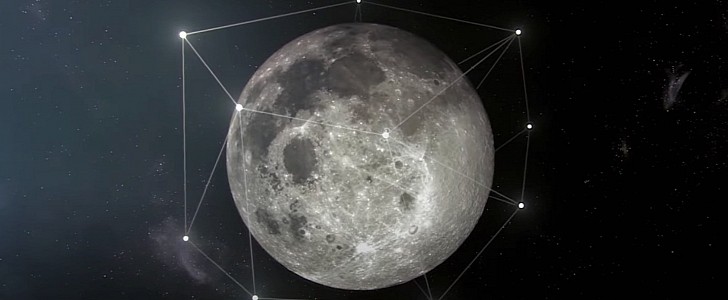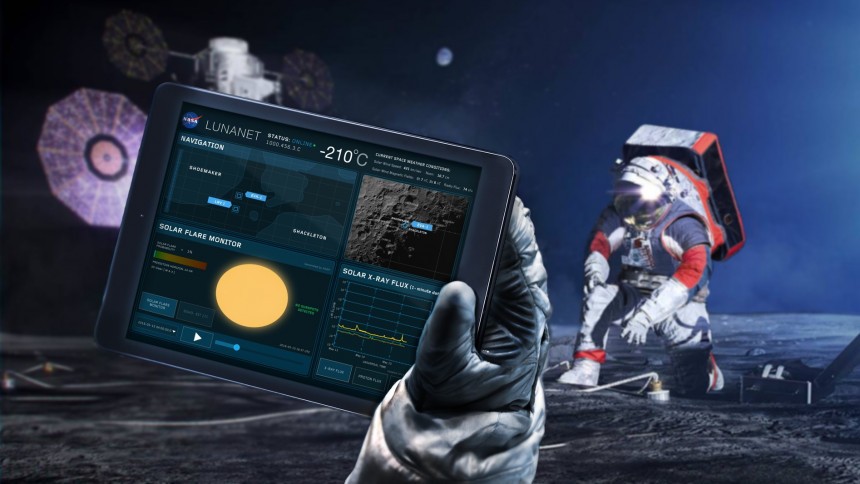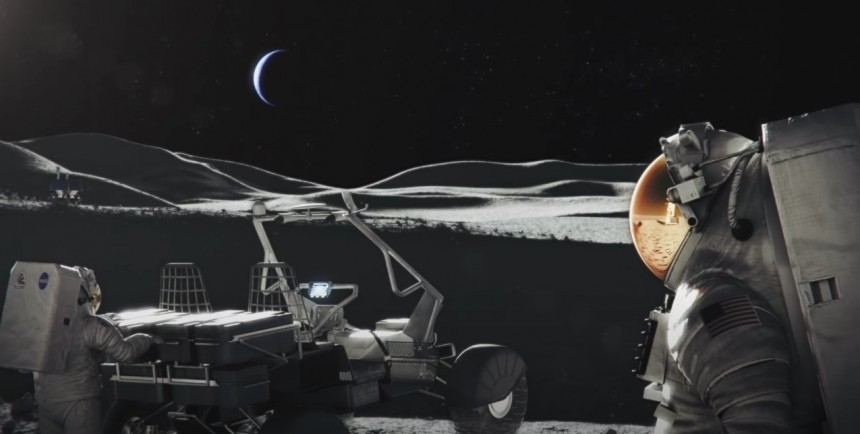America is going back to the Moon, and this time it plans to stay. As part of the Artemis program, NASA will put the first woman and the first person of color on the lunar surface and establish a long-term presence beyond Earth's low orbit. But once the astronauts set foot on the lunar terrain, they will need an internet-like architecture to support navigation and communication in space. This invisible network is called the LunaNet.
It's been almost five decades since astronauts last set foot on the Moon as part of the Apollo program. Since then, the robotic exploration of space has seen incredible technical development and scientific breakthroughs. Finally, humanity will return to the lunar surface in 2024 as part of the Artemis program.
However, before NASA begins shuttling people to our natural satellite, it has to build a network there. That will go beyond Earth's low orbit and connect space to Earth in a sort of Internet connection. The space agency's response to that is LunaNet.
This vast network, which is designed to provide connectivity and services to lunar missions, started its journey at NASA's Goddard Space Flight Center in Maryland. The proposal for an internet-like architecture was initially suggested in 2019 in response to a request for communications and navigation solutions for small satellite constellations around the Moon.
This is where things took off. Experts came together to develop this concept, and now NASA's team is already hard at work with transforming the LunaNet into a reality.
The backbone for this "lunar internet" is the Delay/Disruption Tolerant Networking (DTN). The DTN will ensure that data travels through the network and gets to its destination even if it encounters possible signal disruptions.
Astronauts will be able to use the LunaNet via numerous nodes and communicate with the crew on and around the Moon in the same manner that we use Wi-Fi here on Earth. In addition, missions using the network will have access to position and time signals, allowing astronauts and rovers to navigate the rugged lunar terrain and return to their base.
LunaNet will also use space-weather instruments to identify potentially dangerous solar activity, such as flares that erupt from the Sun and send harsh radiation towards the astronauts. With this new connectivity, the crew can be directly alerted.
This will cut down the time it takes for network management on Earth to do so. These warnings will be comparable to the ones we receive on our phones when there is hazardous weather. The architecture's capabilities will also include a lunar search and rescue capability.
LunaNet science services will allow nodes to use their radio and infrared optical communications links to conduct measurements that will help researchers from Earth better understand the Moon. For example, the nodes could allow for baseline observations of our satellite for an in-depth analysis of the lunar environment.
Researchers could also use LunaNet antennas to peer into deep space and search for radio signals from distant celestial objects. Altogether, the architecture's capabilities will give scientists a new platform to test space theories, allowing them to extend their scientific knowledge.
Recently, NASA released the "Draft LunaNet Interoperability Specification" in order to kickstart the development of this new "lunar internet." Technical discussions among industry experts from around the world are expected to follow.
With LunaNet, the space agency will gain more insight into space connectivity and will be able to plan for future journeys to other alien worlds. By sending teams to the Moon, NASA is building the foundation that will allow astronauts to explore deep space. The Moon will serve as a testbed for technologies such as LunaNet that will help humanity get to Mars and beyond.
However, before NASA begins shuttling people to our natural satellite, it has to build a network there. That will go beyond Earth's low orbit and connect space to Earth in a sort of Internet connection. The space agency's response to that is LunaNet.
This vast network, which is designed to provide connectivity and services to lunar missions, started its journey at NASA's Goddard Space Flight Center in Maryland. The proposal for an internet-like architecture was initially suggested in 2019 in response to a request for communications and navigation solutions for small satellite constellations around the Moon.
This is where things took off. Experts came together to develop this concept, and now NASA's team is already hard at work with transforming the LunaNet into a reality.
Astronauts will be able to use the LunaNet via numerous nodes and communicate with the crew on and around the Moon in the same manner that we use Wi-Fi here on Earth. In addition, missions using the network will have access to position and time signals, allowing astronauts and rovers to navigate the rugged lunar terrain and return to their base.
LunaNet will also use space-weather instruments to identify potentially dangerous solar activity, such as flares that erupt from the Sun and send harsh radiation towards the astronauts. With this new connectivity, the crew can be directly alerted.
This will cut down the time it takes for network management on Earth to do so. These warnings will be comparable to the ones we receive on our phones when there is hazardous weather. The architecture's capabilities will also include a lunar search and rescue capability.
Researchers could also use LunaNet antennas to peer into deep space and search for radio signals from distant celestial objects. Altogether, the architecture's capabilities will give scientists a new platform to test space theories, allowing them to extend their scientific knowledge.
Recently, NASA released the "Draft LunaNet Interoperability Specification" in order to kickstart the development of this new "lunar internet." Technical discussions among industry experts from around the world are expected to follow.
With LunaNet, the space agency will gain more insight into space connectivity and will be able to plan for future journeys to other alien worlds. By sending teams to the Moon, NASA is building the foundation that will allow astronauts to explore deep space. The Moon will serve as a testbed for technologies such as LunaNet that will help humanity get to Mars and beyond.










